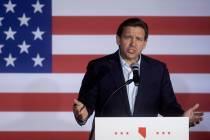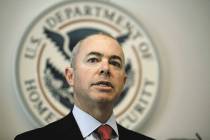EDITORIAL: ‘Preventing abuse’ of the public employee pension system
When the final coronavirus budget damage is calculated, Nevada lawmakers will be forced to examine every potential area of savings. And that must include the state’s generous public pension system.
The Public Employees’ Retirement System of Nevada has as much as $50 billion in unfunded liabilities, depending on who has the calculator. The current pandemic hasn’t helped. While many state pension funds enjoyed one of their best quarters ever for the three-month period ending June 30, the Wall Street Journal reported this week, they remain far short of their overly optimistic return targets, which are usually around 7 percent. “That’s the funny thing with math,” one financial expert told the paper. “If you go down 20 percent, a 20 percent return does not make it up.”
To make up for the massive deficit, PERS has been consistently increasing contributions from local governments and workers (read: taxpayers). But the financial devastation wrought by the pandemic demands more than tinkering. A California court case offers one potential means of savings.
Last week, the California Supreme Court unanimously ruled that a reform seeking to limit “pension spiking” did not violate contracts with county employees. Under spiking, workers seek to maximize their pay near retirement in order to increase their pensions. The Los Angeles Times reported that, “in some cases, workers received more in pension payments than they earned while working.”
The reform was implemented in 2012 under then-Gov. Jerry Brown. But government unions tied up the measure in court for eight years in a futile effort to preserve the perk. The law was enacted “for the constitutionally permissible purpose of closing loopholes and preventing abuse of the pension system,” the justices held.
Nevada has a few more safeguards than California when it comes to preventing such abuses. But PERS still bases payouts on a worker’s highest three years of earnings, which drives up costs considerably and creates an incentive to manipulate the system by backloading as much pay as possible. Consider that Social Security payouts are calculated on a worker’s 35 highest years of income.
The most promising means of addressing soaring public pension obligations would be to transition new hires from a defined benefit program to a defined contribution approach more common in the private sector. Nevada’s legislative Democrats prefer instead to fiddle rather than upset their government union benefactors. But the coronavirus budget carnage will only make inaction more dangerous. A modest start would be to, like California, ensure that public pensions are calculated on a more realistic assessment of an employee’s career earnings rather than a tiny snapshot designed to hook taxpayers for as much money as possible.




























